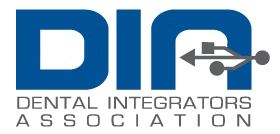The Real Cost of Innovation Debt
 This is an article written for Sally McKenzie’s newsletter The Dentist’s Network which can be found Here
This is an article written for Sally McKenzie’s newsletter The Dentist’s Network which can be found Here
By Clay Archer, CEO and Founder of DentalPC and DIA Member
A colleague of mine from Ottawa introduced me to the concept of Innovation Debt, and it struck a chord with me. His basic premise is that we all have a certain level of innovation and technical progress in our businesses/practices. Top performing practices manage their growth in a steady, consistent pace, using budgeting and planning to make investments. Others who don’t make regular, planned progress fall behind, and once they fall too far behind the cost and disruption of making up the deficit become exponentially higher. This gap is called Innovation Debt.
When I first read about this concept, it made me think of some of the first dental practices I worked in back in the 90’s. The practice would have a wonderful older dentist whose office was past its prime. It had aged wooden paneling and the old pastel GE x-ray heads, pink, baby blue and yellow. As you walked down the hall, you would see worn carpet in the operatories. It needed a good paint job inside and out. At some point, it had been a beautiful new facility, but it went downhill from there. In year five the doctor didn’t repaint, in year ten they didn’t change out the wood paneling and carpet, in year 15-20 they didn’t upgrade any equipment. Slowly but surely the practice got to a point where getting back to a nice facility became a six-figure gut and redo that would never get done. In the same building the doctors’ peer, who maintained and planned for upgrades, had an attractive, contemporary facility and a thriving practice. Innovation debt is the same thing when it comes to technology.
Now that we have a basic idea about what innovation debt is let’s talk about three things that you can do from the beginning to ensure you don’t fall behind.
- Setting an annual budget like clockwork. The most important thing you can do is define what the target is. To be clear, this is not about buying every shiny object you see at a trade show. This is about systematic progress that improves patient experience, clinical care and efficiency of the office. The best way to find the “Goldilocks” amount to spend is to set and drive to a budget. Each year you can evaluate where you stand, what your profit level will be and what you choose to reinvest. If you fell short or spent too much in the previous year, you adjust your goals for the next.
- Meet with your leadership team and a Dental Integrator and discuss your innovation path. Make sure you have the buy-in from the staff, and they see the value of CAD/CAM, 3D, Recall Systems, etc. There is nothing more detrimental to your progress than buying expensive equipment that isn’t used because it isn’t properly adopted. This is an area where your Dental Integrator can help you choose the right technology that is the best fit for your office.
- Be an active member of your dental community. Go to the dental conventions, support your component and state dental association, and meet with your peers. The best way to find out what “best in class” looks like is to talk to and visit your peers. See what is working and what isn’t and form your own prescription for your practice. I can’t emphasize enough the importance of visiting other offices, talking to your supply reps and networking. I know everyone is afraid that their reps will “sell” them more than they need, but they are a wealth of knowledge, and the right one will be consultative and help you grow.
Remember, small regular additions are more comfortable for your team to adopt, learn and perfect. Regular expenditures are easier to budget for and afford. If things go well and you exceed budgets, slightly bigger, similar investments can be made. It’s like working out or eating right, you build on success and add layers.
Dentists often put off updating their technology until it’s too late. The longer you put off making technology changes in your practice, the more expensive those changes become. Smaller changes become harder to implement, and the need for much more substantial changes grows. Don’t wait until you are faced with a costly and time-consuming task to update your technology. Be proactive rather than reactive and make sure you avoid falling into Innovation Debt.
Clay Archer is the CEO and Founder of DentalPC, a dental specific IT solutions provider serving the southeastern United States since 1995. He is also a member of the Dental Integrators Association www.dentalintegrators.org. Clay can be reached at clay@dentalpc.com

Leave a Reply
Want to join the discussion?Feel free to contribute!